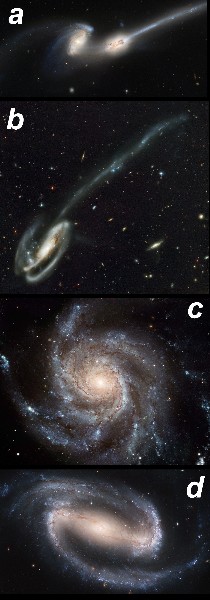 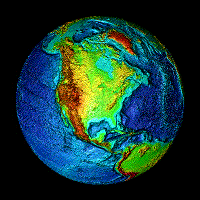
J. Marvin Herndon's Structure of Galaxies |
|
| “The treasures hidden in the heavens are so rich that the human mind shall never be lacking in fresh nourishment.” – Johannes Kepler (1571-1630) |
|
Rather than making models, a different methodology is employed here, which has been described by J. Marvin Herndon [1]. First, important observations pertaining to galaxies and galactic structures are presented. Next, Herndon’s concept of the thermonuclear ignition of stars is presented and contrasted to the prevailing, popular idea which had its origins in the 1930s. Then, seemingly unrelated observations are placed into a logical sequence so that causal relationships become evident, making sense of the diversity of galactic structures, and pointing the way for future discoveries and advances in thinking. |
| Galaxy Observations |
|
A galaxy is usually thought of as being comprised of billions of luminous stars, sometimes as many a trillion stars, gravitationally bound into the well-known, starfish-like spiral morphology or the barred spiral morphology. Anomalous forms occur as well.
|
| Thermonuclear Ignition of Stars |
|
That concept of stellar ignition has persisted to the present, although clearly there were indications of a problem. In 1965, Hayashi and Nakano from their calculations realized that thermonuclear ignition temperatures of a million degrees Celsius would not be attained during stellar formation [4]. The reason for the difficulty in attaining million-degree temperatures is that heating produced by the in-fall of dust and gas is off-set by radiation from the surface, which is a function of the fourth power of temperature; in other words, T×T×T×T, which for T=1,000,000 degrees is a huge loss-factor. Rather than questioning the underlying astrophysical assumptions, for more than four decades astrophysicists just tweaked their modeling parameters, such as opacity and formation rate or added additional ad hoc hypotheses, such as a shock-wave induced sudden flare-up [5, 6]. The implication, (wrongly) assumed for more than 80 years, is that stars automatically ignite during their formation.
There is a profound and fundamental difference between stellar thermonuclear ignition by nuclear fission, as suggested by Herndon [8], and the previous idea, which had its beginnings before nuclear fission was discovered. With the pre-1938 idea, which continues to the present, the implicit assumption is that stars automatically ignite as a consequence of the heat produced through the in-fall of dust and gas during formation. Herndon’s concept of stellar thermonuclear ignition by nuclear fission, on the other hand, leads to the possibility of stellar non-ignition, to dark stars, which will remain dark stars unless and until seeded with fissionable elements. Half a century ago, Burbidge, Burbidge, Fowler and Hoyle set forth the basis for thinking that the chemical elements are synthesized in stars, with the heavy elements being formed by rapid neutron capture in the supernova phase at the end of a star’s life [9]; there may be another explanation. The conditions and circumstances at galactic centers appear to harbor the necessary pressures for producing highly dense nuclear matter and the means to jet that nuclear matter out into the galaxy where, according to Herndon [1, 10], the galactic jet seeds dark stars which it encounters with fissionable elements, turning dark stars into luminous stars. |
| Origin of Galactic Luminous Star Distributions |
|
The arms of spiral galaxies, such as M101, pictured at c)left, and the bars which often occur in disc galaxies [11], such as in NGC1300, pictured at d)left, possess morphologies which Herndon suggests occur as a consequence of galactic jetting of fissionable elements into the galaxy of dark stars, seeding the dark stars encountered with fissionable elements, thus making possible ignition of thermonuclear fusion reactions. The structures of just about all luminous galaxies appear to have the jet-like luminous-star features, the imprint of the galactic jets which gave rise to their ignition, the imprint of the distribution of fissionable, heavy element seeds. Therein is the commonality connecting the diverse range of galactic observed structures and the causal relationship which appears to exist. And what of the dark matter necessary for dynamical stability? The dark matter is the spherical halo of un-ignited, dark stars, located just where it must be to impart rotational stability to the galactic luminous structure [2]. When scientific thinking is underlain by mistaken understanding, no further progress is possible. Really good scientists will understand that finding and righting underlying mistakes will inevitably open the door for new insights, new advances and important discoveries. J. Marvin Herndon has just parted the curtain a bit, providing potentially important new understanding while possibly showing the way for new insights, new advances and important discoveries to be made. |
| References | |
| 1. | Herndon, J. M., Maverick's Earth and Universe. 2008, Vancouver: Trafford Publishing. ISBN 978-1-4251-4132-5. |
| 2. | Rubin, V. C., The rotation of spiral galaxies. Science, 1983, 220, 1339-1344. |
| 3. | Bethe, H. A., Energy production in stars. Physical Review, 1939, 55(5), 434-456. |
| 4. | Hayashi, C. and Nakano, T, Thermal and dynamic properties of a protostar and its contraction to the stage of quasi-static equilibrium. Progress in Theoretical Physics, 1965, 35, 754-775. |
| 5. | Larson, R. B., Gravitational torques and star formation. Monthly Notices of the Royal Astronomical Society, 1984, 206, 197-207. |
| 6. | Stahler, S. W., The early evolution of protostellar disks. Astrophysical Journal, 1994, 431, 341-358. |
| 7. | Hahn, O. and Strassmann, F., Uber den Nachweis und das Verhalten der bei der Bestrahlung des Urans mittels Neutronen entstehenden Erdalkalimetalle. Die Naturwissenschaften, 1939, 27, 11-15. |
| 8. | Herndon, J. M., Planetary and protostellar nuclear fission: Implications for planetary change, stellar ignition and dark matter. Proceedings of the Royal Society of London, 1994, A455, 453-461. (click here for pdf) |
| 9. | Burbidge, E. M., et al., Synthesis of the elements in stars. Reviews of Modern Physics, 1957, 29(4), 547-650. |
| 10. | Herndon, J. M., New concept for internal heat production in hot Jupiter exo-planets, thermonuclear ignition of dark galaxies, and the basis for galactic luminous star distributions. Current Science, 2009, 96, 1453-1456. (click here for pdf) |
| 11. | Gadotti, D. A., Barred galaxies: an observer's prospective. arXiv:0802.0495, 2008. |
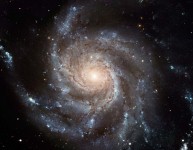


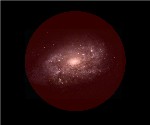

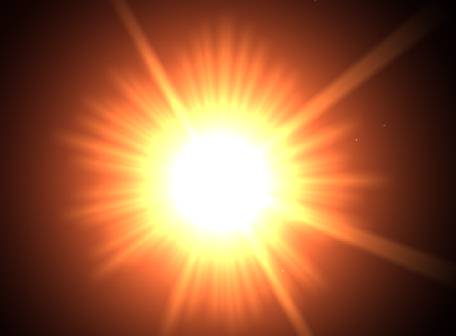
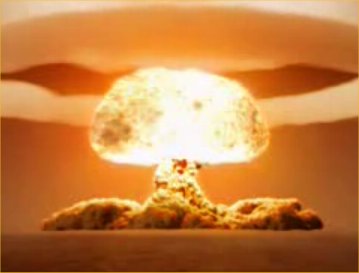 In December 1938, nuclear
fission was discovered [7].
Then, nuclear fission chain
reactions were discovered,
and proven capable of
powering atomic bombs
(A-bombs) and proven capable
of igniting hydrogen bombs
(H-bombs), thermonuclear
fusion bombs. Every
thermonuclear fusion H-bomb
is ignited by its own
nuclear fission A-bomb, and
every H-bomb detonation,
such as the photo at left, is an
experimental verification
that nuclear fission chain
reactions can ignite
thermonuclear fusion
reactions. In a paper
published in 1994 in the
Proceedings of the Royal
Society of London, J. Marvin
Herndon suggested that
stars, like H-bombs, are
ignited by nuclear fission
chain reactions [8].
In December 1938, nuclear
fission was discovered [7].
Then, nuclear fission chain
reactions were discovered,
and proven capable of
powering atomic bombs
(A-bombs) and proven capable
of igniting hydrogen bombs
(H-bombs), thermonuclear
fusion bombs. Every
thermonuclear fusion H-bomb
is ignited by its own
nuclear fission A-bomb, and
every H-bomb detonation,
such as the photo at left, is an
experimental verification
that nuclear fission chain
reactions can ignite
thermonuclear fusion
reactions. In a paper
published in 1994 in the
Proceedings of the Royal
Society of London, J. Marvin
Herndon suggested that
stars, like H-bombs, are
ignited by nuclear fission
chain reactions [8].